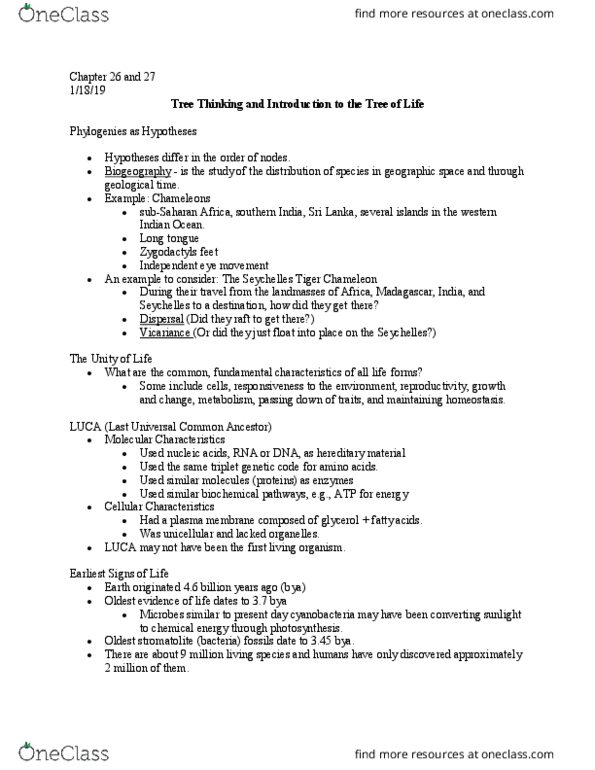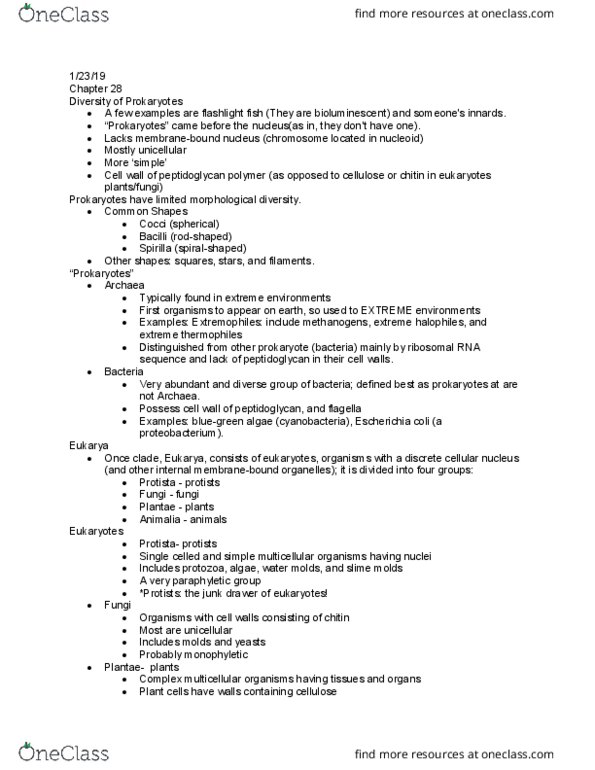BIOL 1030 Lecture Notes - Lecture 6: Proteobacteria, Eukaryote, Protist
BIOL 1030 verified notes
6/6View all
Document Summary
Diversity of prokaryotes: a few examples are flashlight fish (they are bioluminescent) and someone"s innards. Prokaryotes came before the nucleus(as in, they don"t have one): lacks membrane-bound nucleus (chromosome located in nucleoid, mostly unicellular, more simple", cell wall of peptidoglycan polymer (as opposed to cellulose or chitin in eukaryotes plants/fungi) Prokaryotes have limited morphological diversity: common shapes, cocci (spherical, bacilli (rod-shaped, spirilla (spiral-shaped, other shapes: squares, stars, and filaments. Eukarya: once clade, eukarya, consists of eukaryotes, organisms with a discrete cellular nucleus (and other internal membrane-bound organelles); it is divided into four groups, protista - protists, fungi - fungi, plantae - plants, animalia - animals. Eukaryotes: protista- protists, single celled and simple multicellular organisms having nuclei, a very paraphyletic group. Includes protozoa, algae, water molds, and slime molds. *protists: the junk drawer of eukaryotes: fungi, organisms with cell walls consisting of chitin, most are unicellular, probably monophyletic.




